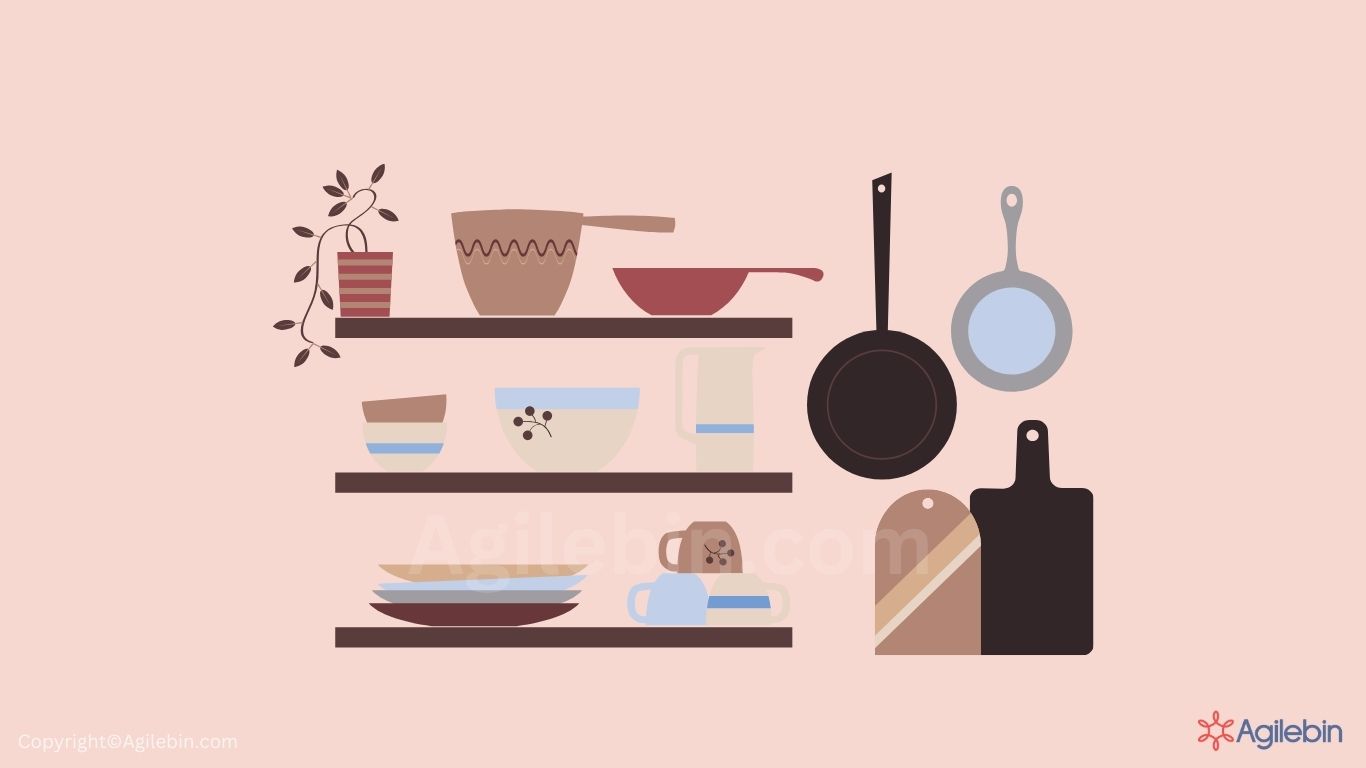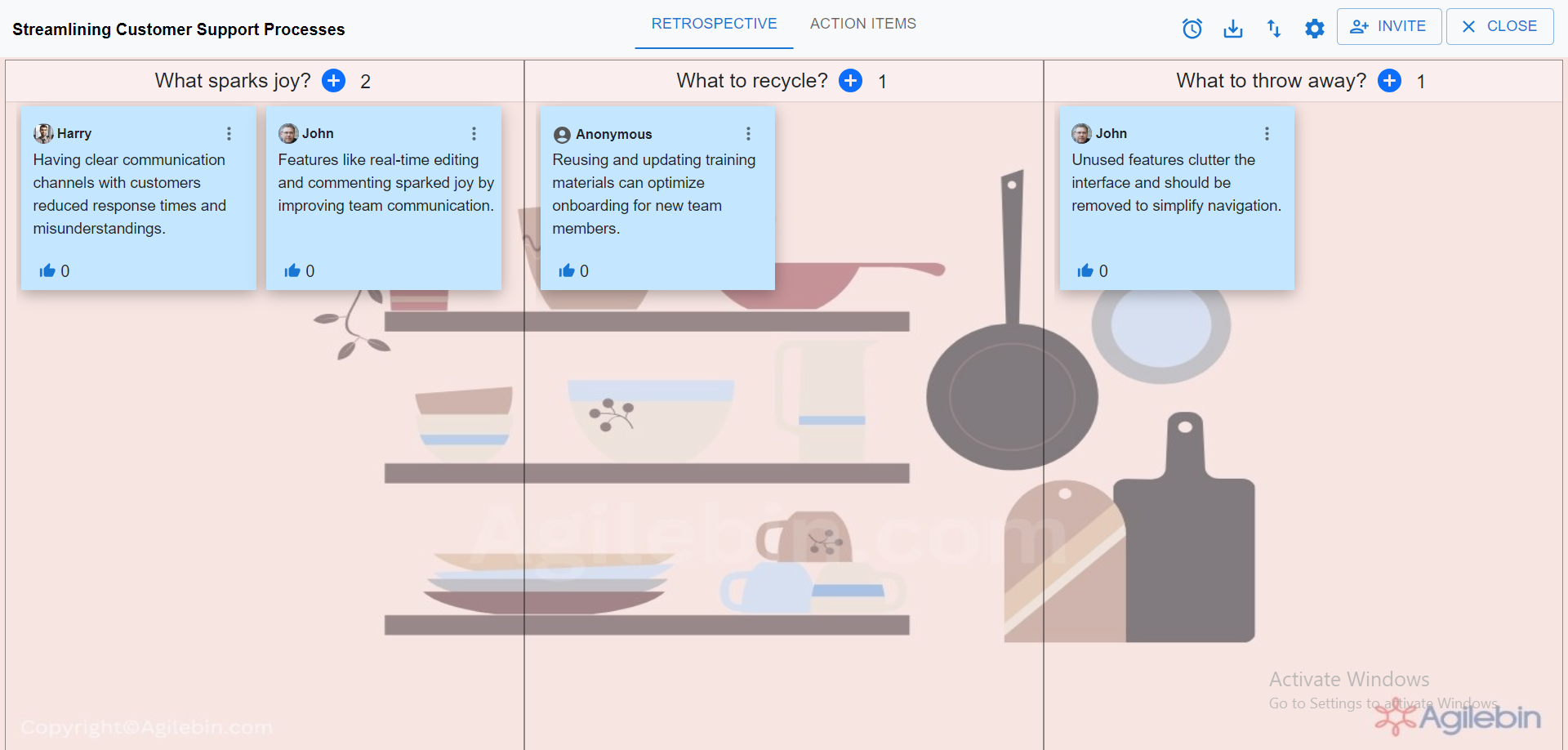Marie Kondo Retrospective
A Marie Kondo Retrospective is a team meeting inspired by the KonMari method, focusing on reviewing and organizing work processes, identifying what sparks joy, and eliminating what doesn't.

What is a Marie Kondo Retrospective?
A Marie Kondo Retrospective is a retrospective technique inspired by Marie Kondo’s KonMari method of tidying up. The method focuses on organizing and decluttering by keeping only those items that "spark joy." In the context of an agile retrospective, the team reviews their processes, tools, practices, and work environment to determine what should be kept, improved, or discarded based on their value and impact on the team's productivity and happiness.
How to Conduct a Marie Kondo Retrospective?
Conducting an Marie Kondo Retrospective involves several key steps to ensure a productive and insightful meeting:
- Preparation: Set up a board with three columns: "Keep," "Improve," and "Discard." Provide sticky notes or use a digital tool for remote teams.
- Identify Items: Ask team members to write down different aspects of their work processes, tools, practices, or any elements they encounter during their work on individual sticky notes. This can include anything from daily stand-up meetings, code review practices, communication tools, deployment processes, etc.
- Categorize: Give team members time to individually reflect on each perspective. Encourage them to jot down observations and insights related to Explorer (innovative ideas), Shopper (external insights), Vacationer (positive aspects), and Prisoner (challenges).
- Keep: Items that "spark joy" and are valuable to the team. These are things that work well and contribute positively to the team’s productivity and morale.
- Improve: Items that are necessary but need enhancement or adjustment. These might be partially effective practices or tools that require some tweaks.
- Discard: Items that do not add value or hinder the team’s performance. These are processes or tools that are outdated, redundant, or cause frustration.
- Discussion: Facilitate a discussion where team members explain their reasoning for placing each item in a specific column. Encourage open and honest feedback to understand the impact of each item on the team's workflow and morale.
- Follow-Up: Review the actions in the next retrospective to ensure improvements are implemented and to check the impact of discarding items.
Columns in Marie Kondo Retrospective
In a Marie Kondo Retrospective, the focus is on evaluating team processes, tools, and practices through the lens of what "sparks joy" and what doesn't. The columns used in this retrospective are:
- What Sparks Joy?: This column is for items, practices, tools, or processes that bring value and positivity to the team. These are the elements that the team finds beneficial and wishes to keep because they enhance productivity, morale, or efficiency.
- What to Recycle?: This column is for items that are useful but could be improved. These elements may not be perfect but have potential value if refined, adjusted, or updated. The team discusses how these can be enhanced to better serve their needs.
- What to Throw Away?: This column is for items that no longer add value or may even hinder the team's progress. These are practices, tools, or processes that are outdated, redundant, or cause frustration. The team decides to discard these elements to streamline their workflow.
When to Conduct a Marie Kondo Retrospective?
Conducting a Marie Kondo retrospective, inspired by Marie Kondo's methods of tidying and organizing, can be beneficial whenever you feel the need to reassess and improve your living space, habits, or mindset. Here are some scenarios when it might be particularly useful:
- After a major life change: Such as moving to a new house, starting a new job, or after a relationship change. These transitions often prompt a reevaluation of what items and habits are serving you well.
- Seasonal or annual cleaning: Many people find it helpful to conduct a thorough review of their belongings and living space periodically, such as at the beginning of a new year, seasonally, or during spring cleaning.
- Feeling overwhelmed or disorganized: If you find that clutter or disorganization is causing stress or hindering productivity, a Marie Kondo retrospective can help you regain control and create a more peaceful environment.
- Before or after a decluttering effort: Whether you've already decluttered using the KonMari method or are considering it, a retrospective can help you reflect on what you've accomplished, reassess your priorities, and plan your next steps.
- To reset and refocus: Sometimes, life gets busy and we accumulate things or habits that no longer serve us. A Marie Kondo retrospective can be a reset button to realign with your values and create a space that supports your current lifestyle and goals.
- As part of a minimalist lifestyle: If you're striving to live with less and simplify your life, regular retrospectives can help you stay on track and prevent unnecessary accumulation.
How can you conduct a Marie Kondo retrospective with Agilebin?
Effortlessly conduct a Marie Kondo retrospective with Agilebin's ready-to-use template!
Why Agilebin's template? Because it provides a realistic and immersive experience, making your Marie Kondo retrospective feel authentic and meaningful. With Agilebin's ready-to-use template, you'll feel like you're navigating through the actual process, allowing for a more effective and insightful retrospective session.
Choose Marie Kondo retrospective template in Agilebin
Choose the Marie Kondo Retrospective template from Agilebin's collection of retrospective templates. This template is specifically designed to facilitate the Marie Kondo Retrospective process, providing a structured framework for your team's reflection and improvement discussions
Invite team members to participate in the retrospective session
Invite team members to participate in the retrospective session by adding their email addresses or sharing the session link directly with them. You can choose between public access using a link, allowing anyone with the link to join, or restricted access, limiting participation to specific users or teams.

Facilitate Discussion with Sticky Notes
Agilebin offers pre-defined columns for the Marie Kondo Retrospective, including "What sparks joy?," "What to recycle?," "What to throw away?." Participants can add sticky notes to each column during the retrospective session, sharing their feedback, observations, and suggestions
